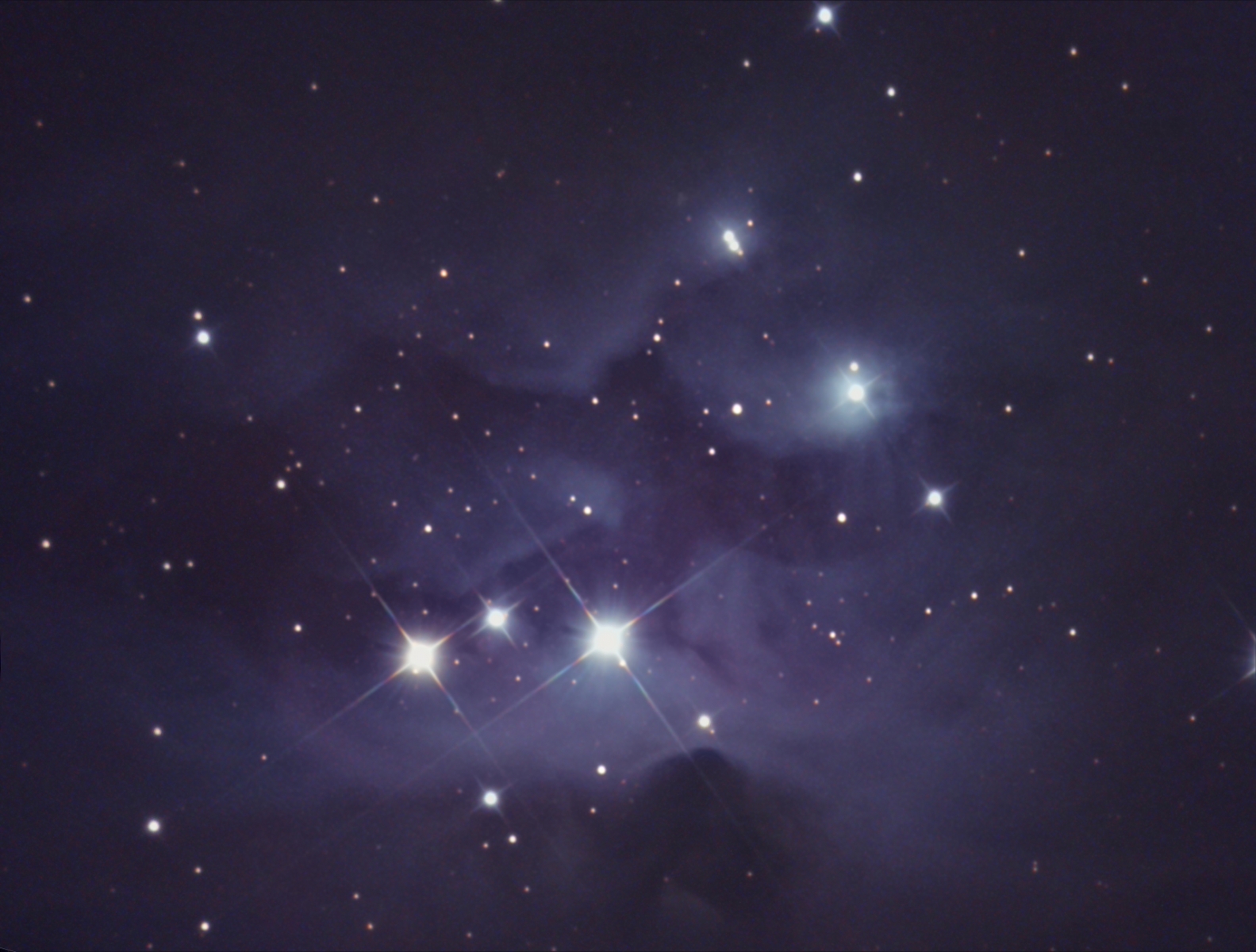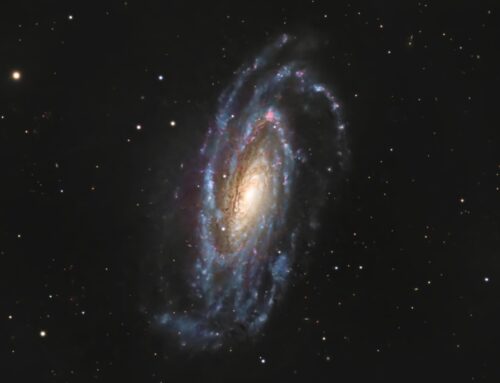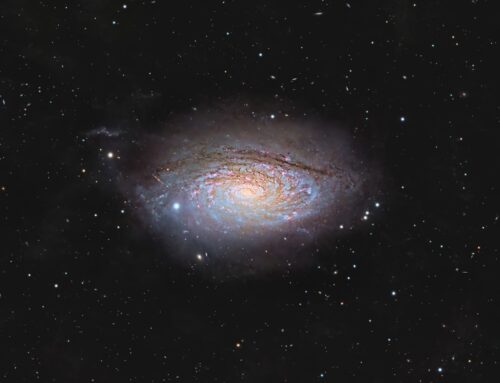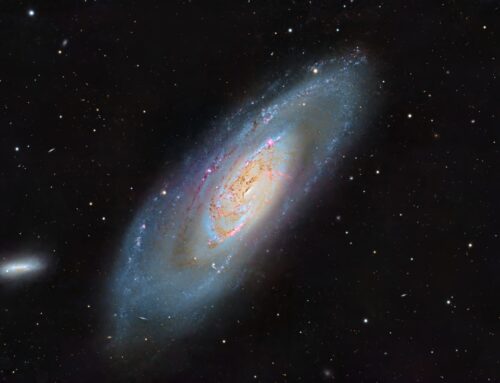NGC1977, The Running Man Nebula
Click image for full size version
March 5, 2010 – Published in the Journal of the Royal Astronomical Society, December 2010
This pretty nebula lies in Orion’s sword, which hangs from his belt. It’s well placed right now in the southern sky in the early evening. This nebula is called “The Running Man” for obvious reasons, and it is located just above the central “star” of the sword, that “star” actually being a very bright nebula (I sent an image of it around recently). The bluish colour is from star light reflecting off of dust in the background. The reddish wisps are due to glowing hydrogen. This image represents a total of 130 minutes exposure, as explained below.
Tekkies:
I shot 4×10 min frames in colour (binned 1×1) on March 1-3 (really bad conditions, so it took 3 nights to get 40 minutes!). In addition to being affected by moonlight, my flat frames were a mess, and I had dust donuts all over the place. Unusable by itself. Then on March 4, I shot 9×10 min in black-and-white (camera binned 2×2). I used separate darks, flats and bias frames for each binning mode. Binning 2×2 for luminance was Brady Johnson’s idea (KW Telescope). It had the following advantages:
1. reduced image scale from 1 arsec/pixel to 2 arsec/pixel, making the camera less sensitive to the effects of bad seeing (i.e. turbulence)
2. increased the sensitivity of the camera by about 4x (in other words, one hour in black and white shows the same smoothness as 4 hours in colour)
3. provided a luminance channel with a better s/n ratio than the colour frames, which I could use to make an LRGB image.
When combining the black and white frames I used a 2×2 Drizzle method, which increased the image scale back up to the same as the colour frames, and increased the resolution compared to the 2×2 binned starting point. I then processed the colour frames focusing on colour balance and smoothness, and processed the luminance focusing on brightness, appropriate sharpening and avoiding noise. I then used the luminance blend mode in Photoshop to apply the luminance frame to the colour frame.
Image details:
4 x 10 min light frames in RGB colour. 9 x 10 min light frames in black and white, camera binned 2×2. All exposures were acquired using Nebulosity 2 software, a QHY8 camera (Gain=0; Offset=70) with UV/IR filter and an 8″ f/8 Ritchey-Chretien telescope on an MI-250 mount. The mount was autoguided using PHD software, a 105 mm f/6 refractor and a QHY5 guiding camera. Light frames were corrected for two bad columns using Sander Pool’s FIXFITS utility, and then calibrated with 6 darks (bad pixel mapping only), 50 flats and 50 bias frames (separate caibration frame sets for 1×1 and 2×2 binning. The calibration, alignment, stacking and preliminary histogram stretching was done in Images Plus 3.0, and Photoshop CS4 was used for final processing and saving as .jpg. The .jpg was saved at full resolution. Shot from my SkyShed just north of Guelph, ON.







Leave A Comment